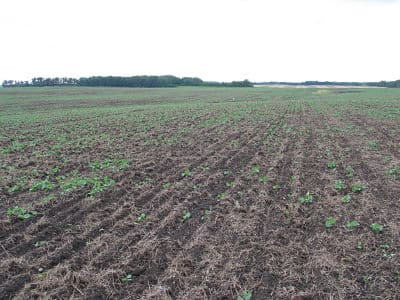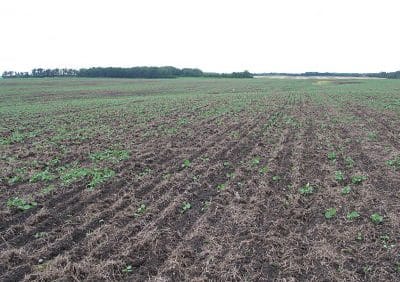
While scouting this week, look out for missing plants, odd patterns, plant damage and anything else out of the ordinary. Here is our top 10 list of things to look for — but others could be at play.
10 – Gopher damage (Richardson ground squirrels or pocket gophers). Read more.
9 – Herbicide carryover damage. Read more (2013 article).
8 – Environmental damage – hail, wind and excess or lack of moisture.
7 – Seedling diseases. Read more.
6 – Cleavers. Read more.
5 – Weed control efficacy. Cool, wet and windy conditions can reduce herbicide efficacy. Did yours perform as expected, or will a second application be needed to keep the crop ahead of the weeds? Read more.
4 – Weed escapes. Is your herbicide package not controlling certain weeds? A tank mix may be required. Or perhaps certain weeds need to be controlled more effectively in the rotation crops. Or perhaps you have resistance issues. Read more.
3 – Flea beetles. Does dominance by striped — if that’s an issue in your area — mean you’ll definitely have to spray? Not necessarily. Follow the usual decision-making steps. Read more.
2 – Cutworms. Growers and agronomists are noticing missing canola plants only after they’ve sprayed out the weeds. If you see patches of missing plants, start digging. Read more.
1 – Plant stand. What is the plant survival rate? Deep seeding is one issue causing establishment problems this year. Can definitely see areas in fields were drill settings were a problem. This leads to increased disease, delayed establishment, higher flea beetle risk as the treatment wears off, and generally low vigor. Read more.
To help with diagnosis of any canola field issues, use the Canola Diagnostic Tool.


